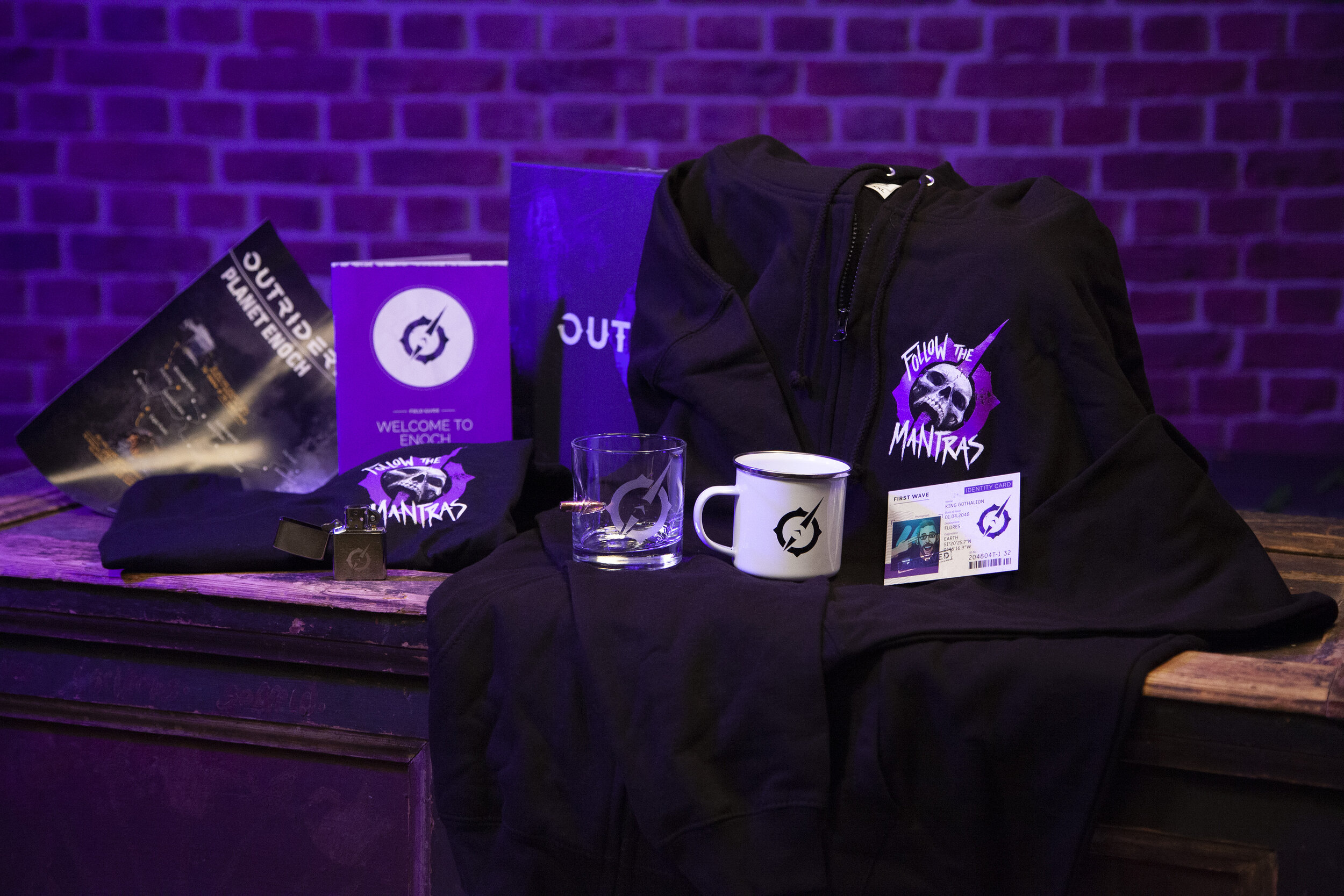How ‘old-school’ physical media can give your digital content a brand new boost
Print is dead, right? Well no, actually. While traditional - and frequently quite wrong - thinking would have you believe that each new media evolution supersedes and replaces the last by default, the truth is that new innovations simply give old favourites new places to play. Nothing ever becomes redundant. If you’re creative enough about how you use things, they just get new context.
And so it is with print media. At Fourth Floor, our collective heritage runs through all areas of the influencer and games media sphere. And that means we have a very wide, multimedia view of the subjects we talk about, the audiences we reach, the kind of stories we tell, and how we tell them. So it should be no surprise that, despite being YouTube-certified experts in digital video with a thorough understanding of how Twitch works and and a deep working knowledge of TikTok, we also find immense value in the good old ways of print and paper. Here’s an overview of how they can make any digital campaign more powerful.
Amplified social coverage
The most simple and immediate benefit of integrating physical media into your digital content marketing plans is that it drives ‘free’ coverage. Especially when working with influencers, if you accompany a content activation or event with a (cool enough) physical media drop, you’ll likely win expanded visibility in a purely organic fashion.
The reason? Social. Aside from community conversation and content promotion, one of social media’s biggest uses is the showing off of cool stuff. Especially cool exclusive stuff. Basic gifting and swag hauls can be a winner in this respect, but by now the world - especially the world of videogames - is positively flooded with keyrings and t-shirts with logos on them.
But with print media, you can do more than that. You can tell stories. You can create narrative-focused artefacts that bridge the gap between fictional worlds and the real one. You can deliver unique, decorative items that blend the aesthetic with the functional, to create messaging that gets pinned on a streaming-room wall indefinitely.
When you nail a concept like this, infusing a cleverly conceived item with engaging story and conceptual hooks, you create an item that truly inspires excitement and becomes a must-show gift. If you were earmarking a chunk of your budget for a relatively expensive crate of branded t-shirts and USB sticks with debatably convenient lead-times, you might want to rethink that motion. You can make far more of a lasting impact by just being more clever with paper.
Fresh connections and powerful, real-world narrative building
Expanding on the above point, while branded merch can build basic awareness, creative print materials can drive real understanding and connection. Because with print media, you have a cost effective, fast-to-produce means of creating artefacts that make your brand tangible in more ways than one.
Perhaps, rather than just a video or a web page, you develop a book to tell your story, delivering your brand’s values and personalities in a more personal, ‘hand crafted’ form. Perhaps you relate the locations and story of your videogame, TV show, or film using written postcards and fictional tourism materials. Maybe you introduce characters and plot points through annotated diaries, notepads, blueprints, and manuals.
All will work. The point is that there are a host of ways to make your product, message, or brand feel like part of the recipient’s real-world experience, whatever it is that you’re trying to communicate or promote. A t-shirt with a logo can’t do that. But once you do have those narrative and experiential hooks sunk in to people’s real-world lives, there’s only more potential for taking them on a real journey. Speaking of which…
Virtual events that feel like real-world happenings
Using similar narrative grounding techniques as mentioned above, it’s worth pondering whether the contemporary shift toward digital, online gatherings actually means that we have to give up the old traditions of physical invitations and after-care.
Our answer is “No”. Jumping off that last point, physical media can pave the way to virtual events that provide a far more tangible sense of place and, well, actual event.
Because why would people ever not enjoy receiving cool stuff that makes them feel special and attended to? Rule one of events: A good event starts long before the event itself. Rule two: It’s not so much about the scheduled gathering or presentation, as it is the individual journey every guest goes on.
As we see it, to really fulfil the true promise of an event (that is, to engage, excite, and captivate your chosen guests, and give them a greater sense of goodwill and connection toward your brand) is a more sustained endeavour. The business of events is to make your brand a physical part of people’s lives for a period, to positively saturate and immerse them in your outlook and messaging. The longer that immersion lasts, the more potent and long-lasting the benefits. So why wouldn’t you work to sustain the experience?
You know that feeling of getting your day-one tickets for a long-awaited gig? Of looking at them with excitement every few days until the morning they become ‘active’? We want to create that. We want to maintain that magical process whereby that ticket then becomes a mystical cultural artifact and beloved souvenir the day after the event. We want to create virtual events that maintain the same ‘permanent residence’ headspace that all the best physical events do, before, during, and after.
You can’t do achieve of the above with an e-mail. So don’t mess around with half-measures. Use physical invitations. Use context-building letters and glossy, tangible preview materials, to set the narrative and paint the picture early on. Create bespoke, thematic gifting and garnish, that puts a small preview of the coming event into your guests’ hands, teasing them with a shard of what they have to look forward to.
Turn dry but necessary info-dumps into storytelling adventures
No-one likes reading players’ guides. I’m sorry, but it’s true. That lovingly crafted reviewers’ guide you wrote, that dense tome of vital gameplay insights, systemic detail, and meta-knowledge pro-tips that you spent two days busily typing up in time for launch? No-one read it. They just ploughed on into the in-game tutorial. Sorry again.
So what do you do if you want to make sure that people really understand your game before they start playing it, reviewers’ notebook in-hand or stream audience eyes-on? You get creative, with something that hides all of those tips and insights in a format that your recipient actually wants to engage with.
Taken for instance, the ‘field guide’ booklet we created for Square Enix and People Can Fly’s hit RPG-shooter Outriders. Charged with creating an asset to relate the game’s complex and unique systems and gameplay ideology in a way that content creators would pay attention to, we immediately gravitated toward a fictionalised, in-universe solution. Because what are modern, AAA videogames all about, if not exercises in exploring new worlds and narratives first-hand?
Extending our philosophy of gifting as the first step of a bigger journey, we wrote, designed, and printed a physical orientation pamphlet for recruits on the game’s extraterrestrial colonisation mission, disguising gameplay tips as mission directives, design details as military intelligence, and later narrative elements as foreboding, vandalised scrawls telling the real story that the powers-that-be would rather leave unknown.
The result? An engaging storytelling approach that parsed meaningful, real-world game knowledge in a frictionless, fictional fashion. Not breaking but actually strengthening the game’s narrative fourth wall, the solution came with the added bonus of more deeply embedding content creators in the beginning of their own personal journeys into the game, blurring the lines between worlds before they’d even installed the game.



